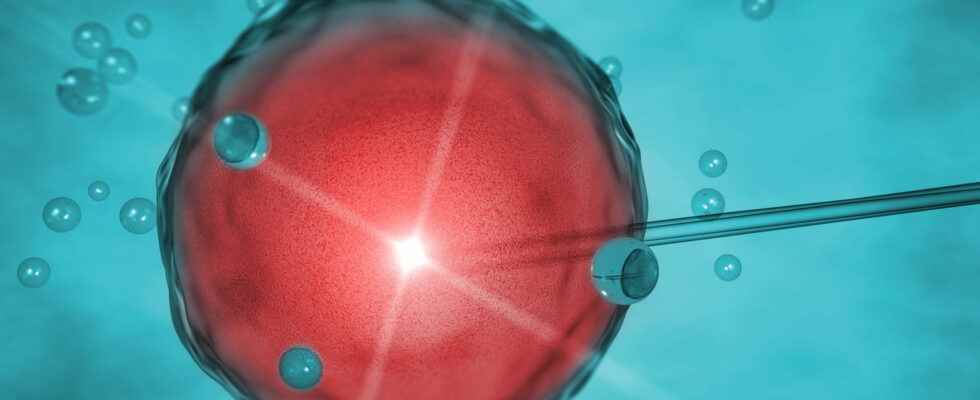Since the bioethics law of August 2, 2021, oocyte vitrification is open to all women who wish to preserve their fertility. Why have your oocytes vitrified? How’s it going ? What is the age limit?
Definition: what is oocyte vitrification?
Oocyte vitrification refers to a artificial insemination method which consists in vitrifying the oocytes, in other words in freezing and preserving a woman’s reproductive cells. It is an oocyte donation which corresponds in men to sperm donation. This process is carried out quickly in a center for medically assisted procreation and simplifies the procedure for egg donation.
What is the benefit of oocyte vitrification?
Oocyte vitrification represents a means of “suspend” his biological clock and therefore, of preserve fertility. “Since the revision of the bioethics law of August 2, 2021, this phenomenon has grown to the point of becoming societal. Several reasons can lead women to want to save their oocytes: because their mothers went through menopause at 32, because they have not yet met the person with whom they want to start a family, because they will have to undergo heavy treatment such as radiotherapy or chemotherapy, becausethey don’t want children right away…”explains Professor Philippe Touraine, head of the department of endocrinology and reproductive medicine at the Pitié Salpêtrière hospital.
Is it legal in France?
Oocyte vitrification is authorized in France since the revision of the bioethics law in July 2011.
Which women can do oocyte vitrification?
Since the revision of the bioethics law of August 2, 2021, any woman can have recourse to oocyte vitrification, in the absence of a medical reason. This process mainly concerns women who wish to preserve their fertility and who do not want to have a child immediately.
Is there an age limit?
A woman can ask to keep her oocytes from his 29 years and up to his 37 years.
Oocyte vitrification is an oocyte conservation process which has been authorized in France since 2011. It is composed of different stages:
► After an ovulation blocking phase, a treatment to stimulate ovulation and promote the growth of follicles is administered to the woman, then ovulation is voluntarily triggered, hoping recruit 10 to 15 follicles.
► “The oocytes are then retrieved and frozen in liquid nitrogen at -196°C. Products called cryoprotectants prevent the formation of ice crystals in the oocyte.
► The oocytes will be thawed to be fertilized by the sperm of a possible spouse to make an embryo which will then be transferred to their uterus.“, says the specialist.
What is the shelf life of oocytes?
The bioethics law of August 2, 2021 stipulates that a woman whose oocytes are stored is consulted each calendar year to find out whether or not she wishes this storage to continue. This consent must be in writing. If she does not wish to continue with the conservation of her oocytes, she must give her consent for her oocytes to be donated, researched or destroyed. A reflection period of three months is granted to confirm this consent. The absence of revocation during this period serves as confirmation. It is terminated in the absence of response after 10 consecutive calendar years. In the event of the death of the person and without their consent, the storage of the oocytes is automatically stopped.
In France, a woman who has had recourse to oocyte vitrification can dispose of her oocytes whenever she wishes : either in view of a pregnancy, or to donate it to couples who cannot have children.
Thanks to Pr Philippe TOURAINE, head of the department of endocrinology and reproductive medicine at the Pitié Salpêtrière hospital
